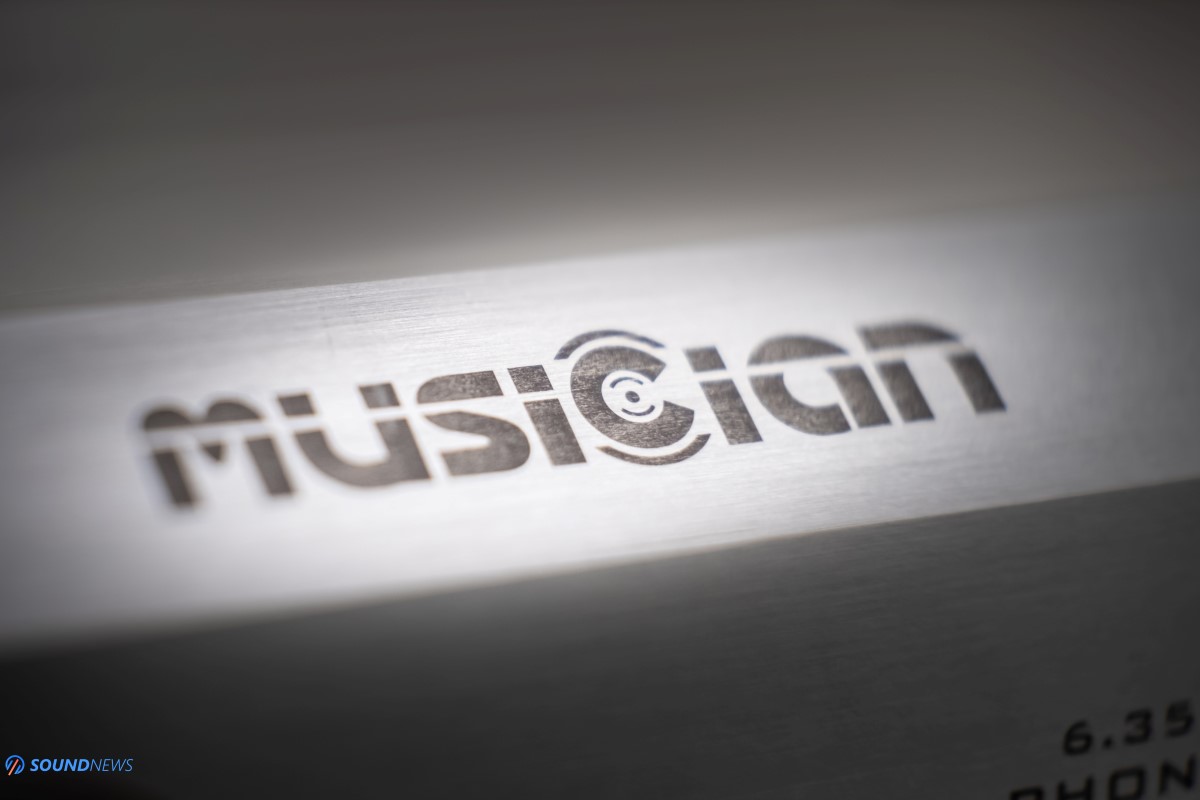Musician Andromeda Class-A Headphone Amplifier Review
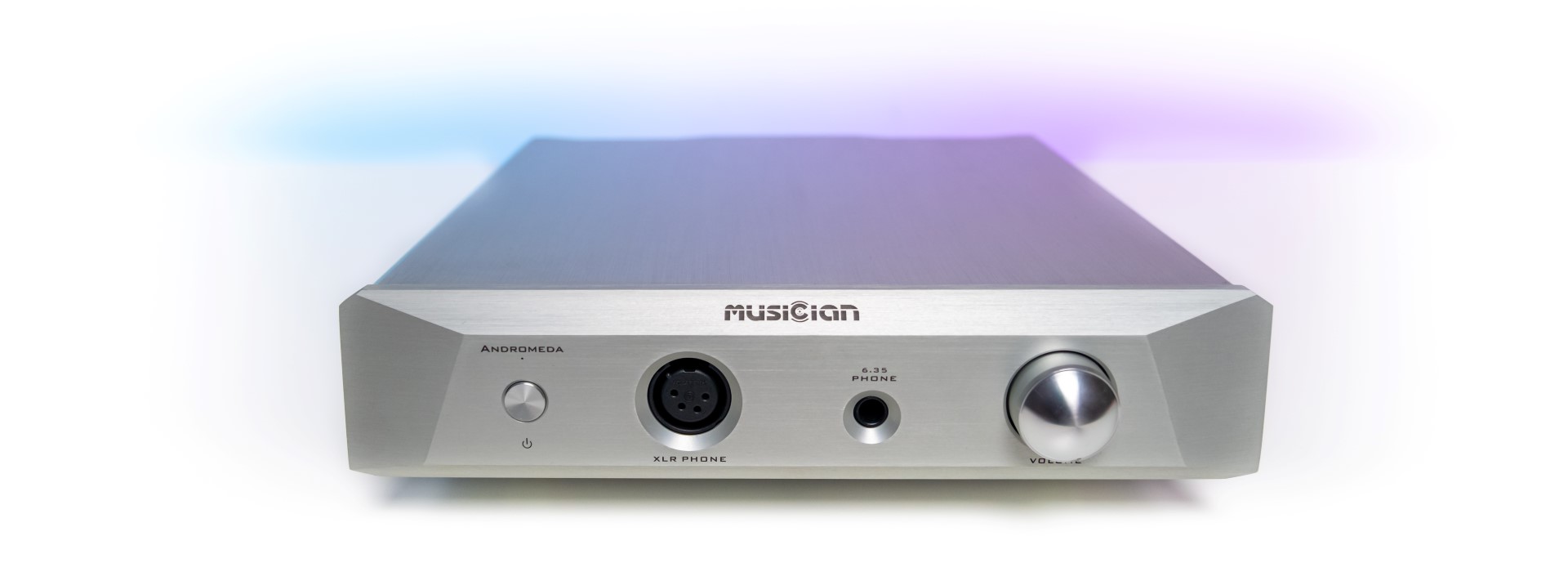
My Video Review:
The most controversial review I ever wrote was for the Musician Pegasus R2R DAC. I didn’t know too much about them at that time, only that they had more than 20 years of experience under their belts in the digital and analog audio domains and that was enough for me to understand the thinking that went into it. There is a debate ongoing on which R2R designs are better. Some companies like to use a longer signal path, a much higher capacitance and an overkill power supply, while other R2R builders believe the shortest path sounds the best. I’m not here to argue which is better or worse, but I’m sure that Pegasus have nothing to do with the first group. Pegasus was a road opener for Musician and it was bumpy ride for sure. Never I have received so many emails, questions and comments on an R2R DAC like Pegasus. Some online publications wanted them to stop their doings and leave it for established manufacturers. For me this hobby feels like a brotherhood, like a bigger family, where we can share our opinions in a civilized way without mocking someone’s work. I guess not everybody are feeling the same.
Believe it or not, Pegasus was a success and it was only a matter of time when new products would see the light at the end of the tunnel. Musician team just released a trio of fresh new products and I am told that some others are being developed as I am typing this. The winged Pegasus, has a brother now called Monoceros (Unicorn in Greek) and that’s a fully-balanced relay-controlled Class-A preamplifier that Pegasus was begging for about a year so it could be used with power amplifiers. Their MDP-2 (Musician Digital Player) is a less interesting device to me, as it focuses mostly on offline music listening from a SD card or from an external USB drive (Flash, SSD or HDD). However, today I will be focusing my attention of their beautiful Andromeda – a fully-balanced Class-A headphone amplifier and preamplifier.
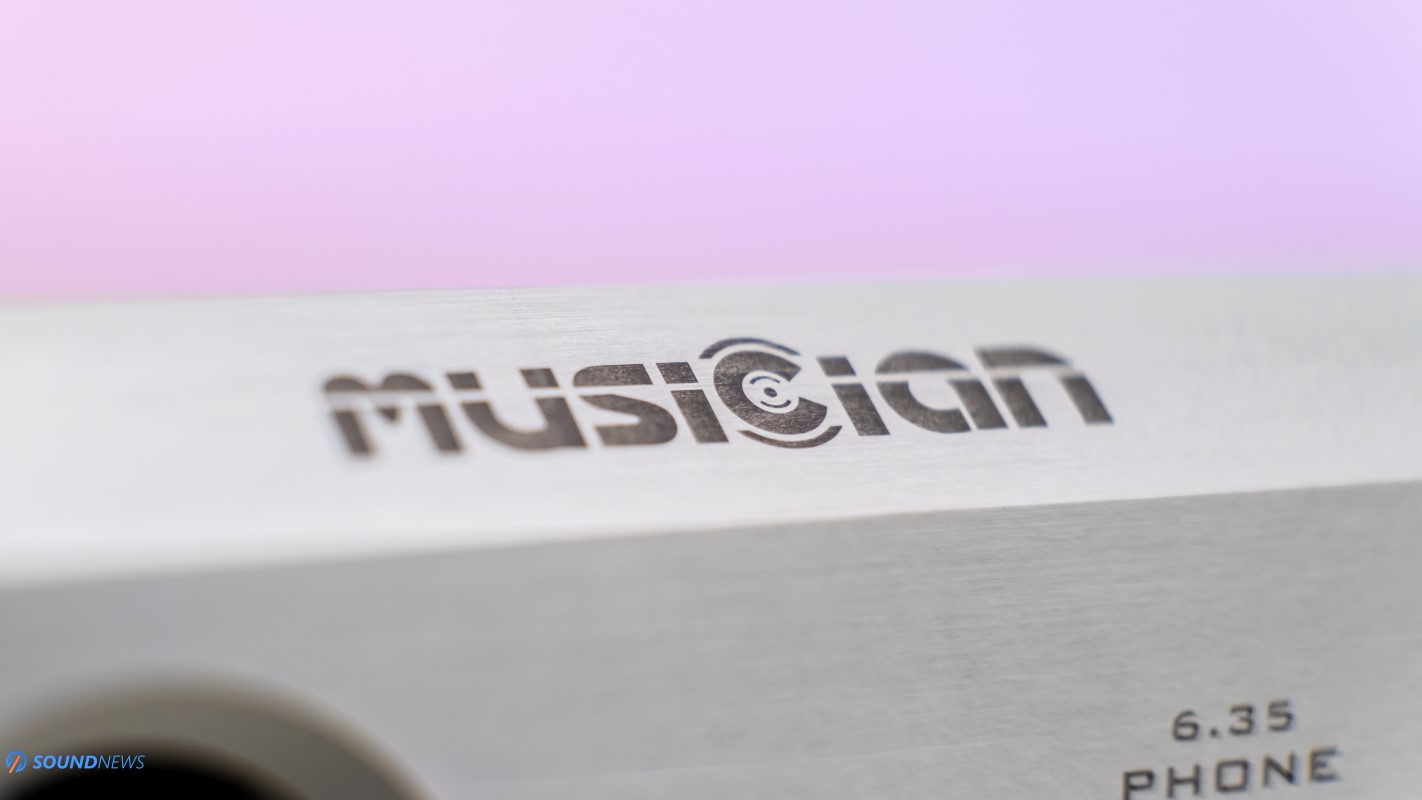
Unboxing Experience
Andromeda came in a huge box, already suggesting that a large and heavy unit is lurking inside. The whole affair is double-boxed with an obscure amount of foam surrounding the main box as an extra protection measure. The product box is a standard one filled with additional layers of black foam. It’s the same box I’ve seen with their Pegasus and that’s a good sign already. Shipping damages shouldn’t be an issue with such an overkill packaging. Besides the unit itself that seems heavier than usual headphone amplifiers I’m testing of late, you’ll find a power cable, a user manual and that’s it. Andromeda can also be used as a preamplifier as it has a pair of XLR outputs on its back, but you will need to manually adjust the volume as it doesn’t have a remote control.

Design & Build Quality
We are getting pretty much the same metal enclosure of their Pegasus, it has the same size, thickness, weight and that is a very good starting point.
It has much thicker plates on all sides compared to usual headphone amplifiers, completely blocking all wireless interferences for a lower noise-floor. I really like its much taller metal feet with silicone pads that will help disperse heat under the unit and absorb nasty micro-vibrations. Andromeda uses a fairly large O-type transformer, plus its Class-A working principle is dissipating a lot of heat, but I’m pleased to tell that it dissipates it efficiently. Its thick internal heat sink glued to its output stage does a very good job, as I find it barely warm on its surface even past 24 hours of use. You can easily put your DAC on top or under it and in both cases it never gets hot.
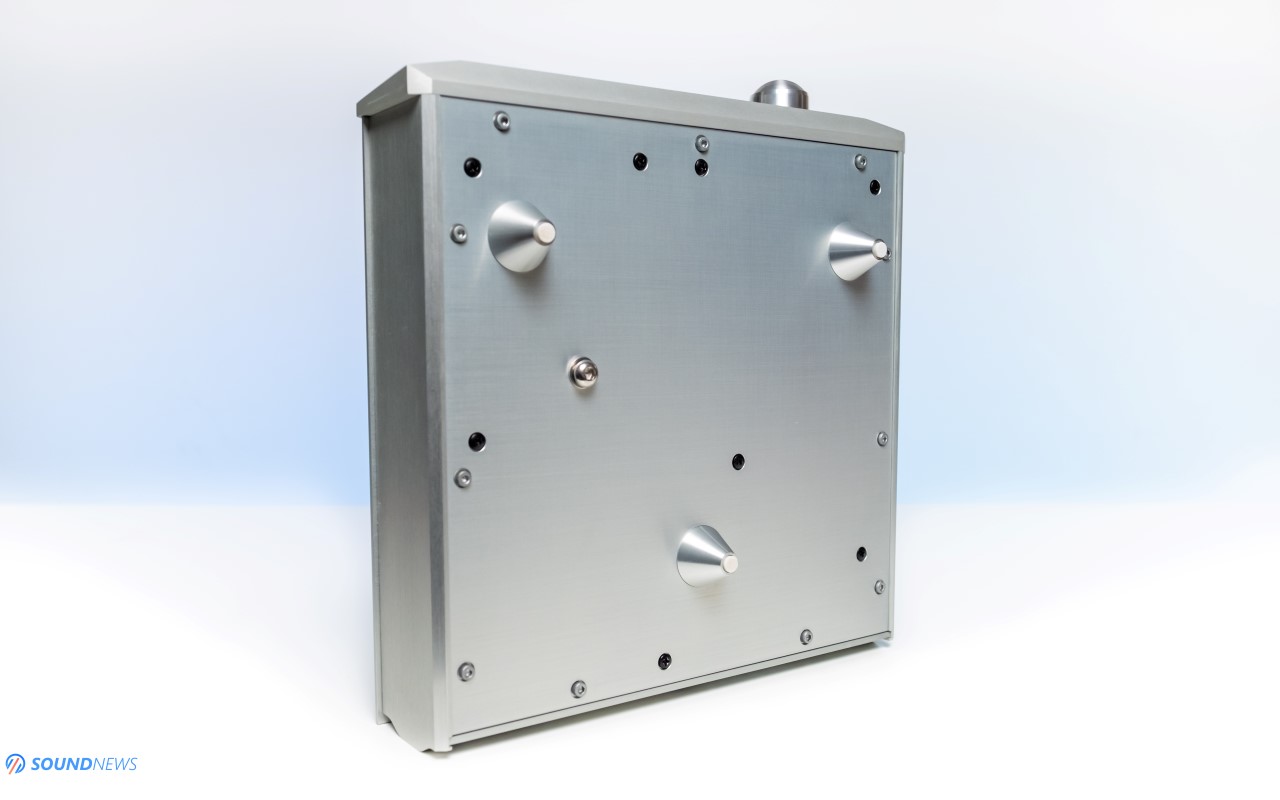
The front plate stands out immediately, with a thickness of about 1.5 cm it feels overkill in a very good way. You can spot a few screws only under it and on its back plate, improving its image and design language. While it has only two sharp edges on its top cover, everything else is rounded, smooth to the touch and I’m not getting chills while handling expensive gear around it. I like that they used a minuscule LED light just above its power button, its dimmed and it isn’t bothering at all in late-night listening sessions. Its anodized aluminum surface has a fine grain in the metal enclosure, that can save it from accidental scratches. They are offering two color options for it; it is either in raw aluminum or black. The laser engraving on its front plate looks good and precise and it’s easy to read. The only thing Musician team overlooked on its front plate is its volume wheel, that doesn’t have any markings. As of right now, there is no way in telling where is your volume position, but fear not, I’ve sent my feedback a week ago, they’ll laser engrave it soon, so you will know where is your volume level.
I like that it has a flushed button on its front and some deeper looking headphone jacks, I’m using plenty of third-party cables and all those worked nicely with it, although sometimes it was a tight fit on its 6.35mm output. Andromeda is a larger than usual headphone amplifier, but it isn’t exactly overkill when it comes to size. At around 3.8 Kg (or 8.4 lbs) and at 280 x 250 x 50 mm, it’s slightly bigger than an average headphone amp and can be easily used in an elegant headphone setup. It would look best on top of Pegasus DAC, but sky is the limit as you can use it with any analog or digital source. Overall, I find it sturdy, it’s built like a tiny tank and it’s very easy to understand and use on a daily basis.

Controls & I/O
It has the simplest front panel a headphone amplifier should have. There is your On/Off button to its left, a micro-LED light on top will show its working status. In the middle you can find a 4-pin balanced XLR output, a standard 6.35 mm (1/4”) headphone jack and to its right a big aluminum volume knob. Since Andromeda is a fully balanced design from input to output, you can spot a pair of XLR inputs on its back and since it can also work as a preamplifier in a loudspeaker setup, a pair of XLR outputs were also added. Nothing more and nothing less, exactly what’s needed for some long listening sessions.
I wish they would incorporate at least a two-position gain switch (say unity gain of 0 dB and +15 dB for all desktop class headphones), for a noiseless performance with low and highly sensitive headphones. I’ll leave it here as an idea for their future devices.
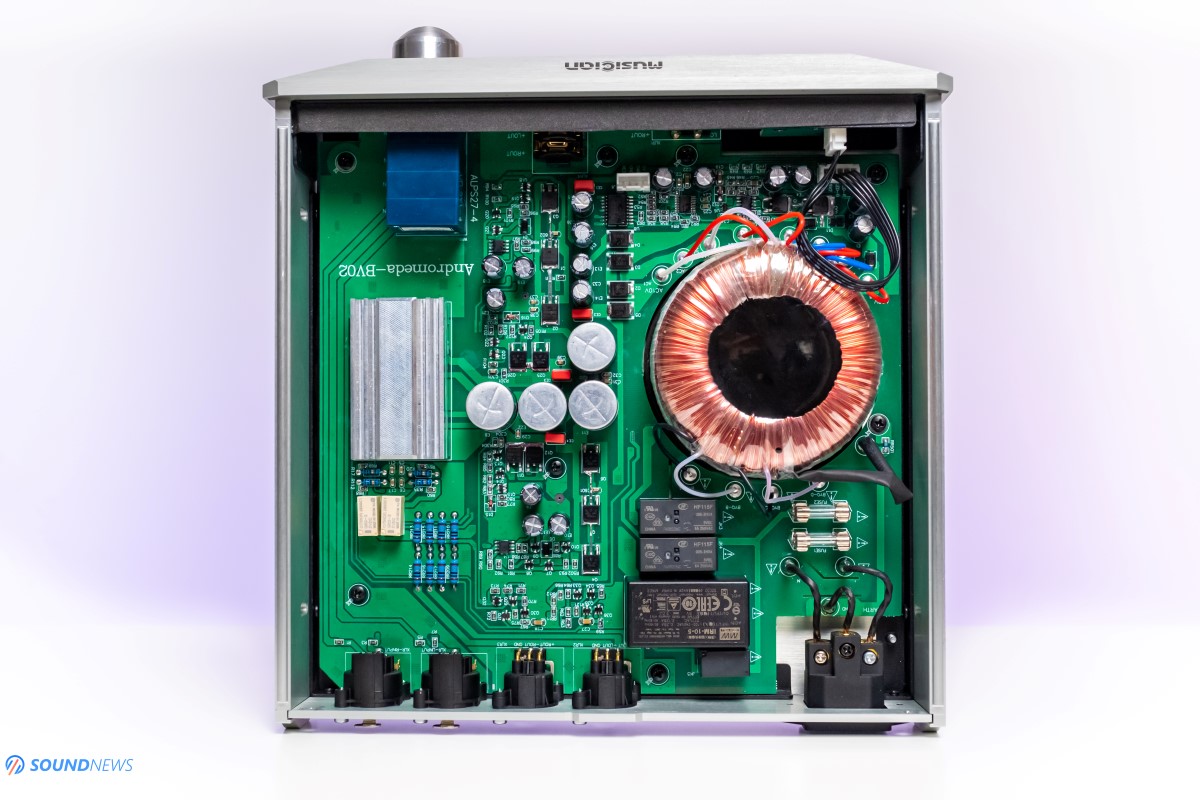
Tech inside it
As I’ve mentioned before, this is their first headphone amplifier that was designed to be used in a balanced configuration for the best results. It is a fully Class-A amp, but I’m not sure if it uses JFETs, MOSFETs or bi-polar transistors. Its output stage is draining power from an oversized O-Type single crystal copper transformer. This is pretty much the one used in their Pegasus DAC. It uses a universal power supply with automatic voltage switching, so you can use it anywhere without fearing of damaging it. It has a fast recovery, ultra-low noise power supply, with a big number of voltage regulators around it, assuring that clean power will be delivered to the most crucial parts of its analog circuitry. To be completely fair with you, I don’t know what exactly its secondary power supply from Mean Well is doing, I believe it works as a final power filter for several parts of its circuitry.
There are plenty all-discrete components inside, I am spotting a big capacitance, so it can store a higher current and unleash it for harder to drive headphones. They used only high-quality Audio-grade capacitors, I see only Elna and Nichicon caps and those are always nice to have in analog amplifier designs.

According to their measurements, Andromeda outputs some 4.5 Watts in 16 Ohms on its balanced out and 1.1 Watts on its single ended output. Its voltage output is also doubling via its balanced out, clearly making it a balanced only amplifier for the best results. Considering we are dealing here with a Class-A amplifier, its single ended output seems just decent by my standards. I’m attaching the final measurements I’ve received from Musician HQ.
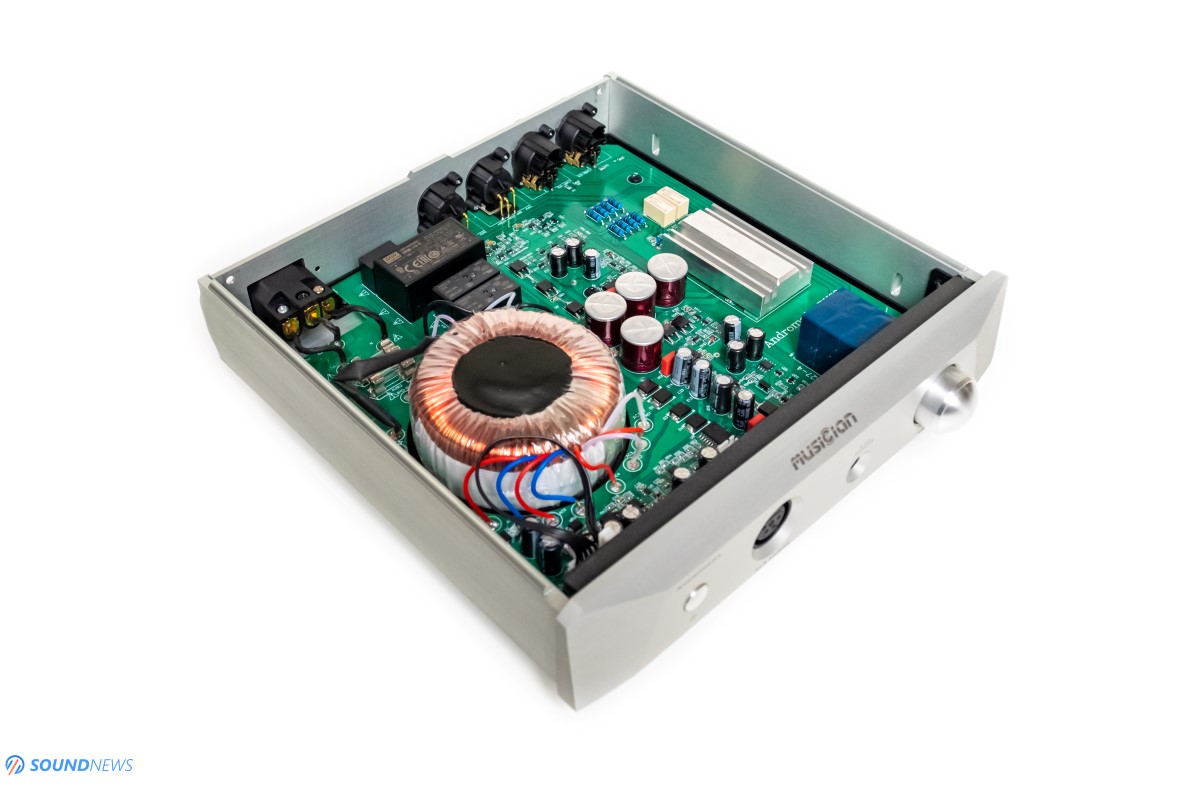
It’s a good sign seeing a noise floor of 2.9 micro-Volts on its balanced out and 6.2 micro-Volts on its single ended output, usually it’s the other way around, again limiting it to the 4-pin XLR that seems to be performing much better not only on terms of power, but also when it comes to noise.
There is one thing that I’ve I discovered myself, it seems that they didn’t use a linear power increase, instead they went with an exponential volume control. From the land of the Red Dragon, there is another headphone amplifier maker that uses exponential volume control and that is Audio-GD.
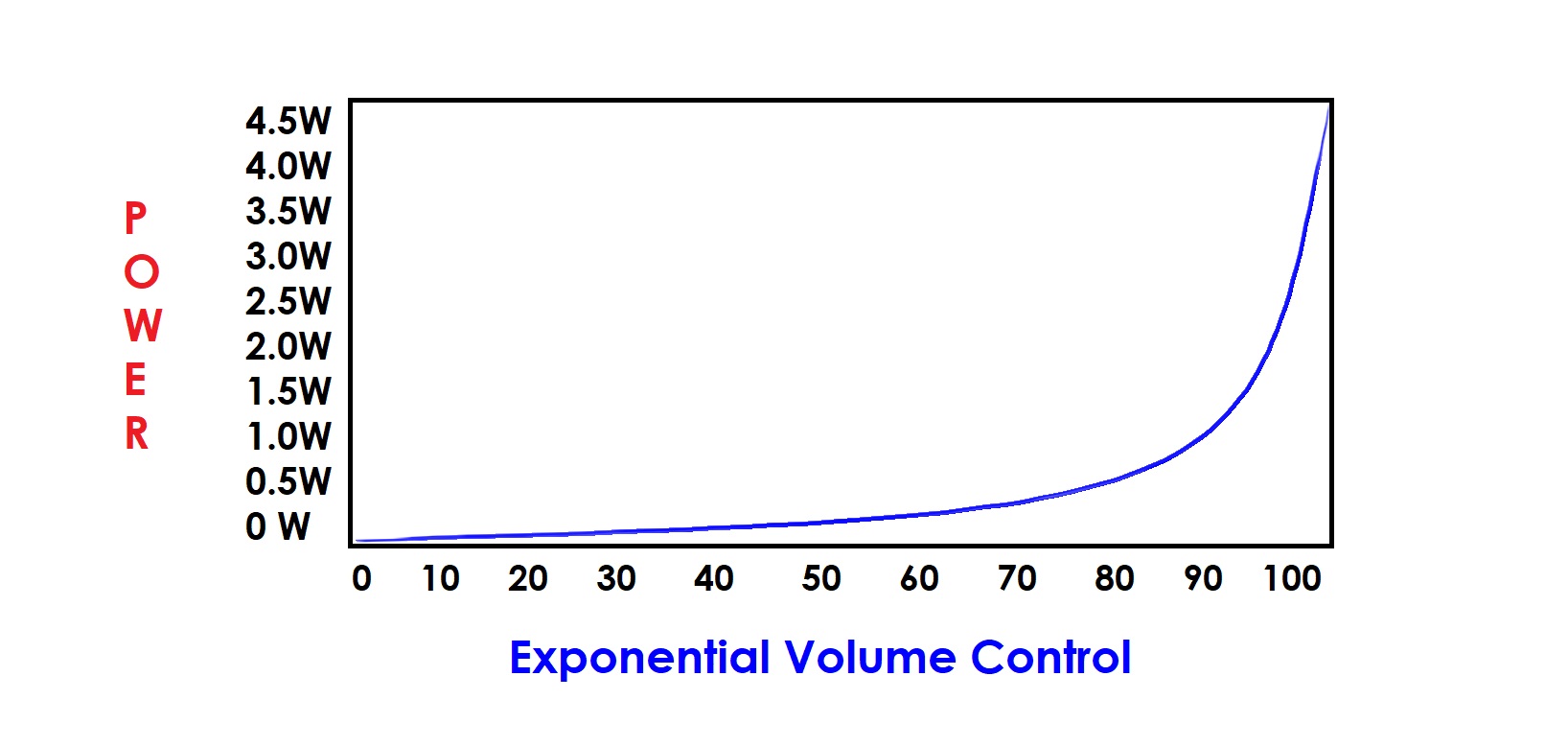
With exponential power, most of it will be offered starting with the 3 O’clock position on its volume wheel (that is around 80% of travel), from that point it outputs several watts and feels considerably more powerful and mean. There is a strong reason they went with a design like this. First of all, the lack of a gain switch would make it unusable with IEMs if it had a linear volume control. With power hungry headphones it might appear as lacking power, but that wasn’t really the case, as past 12 O’clock its power starts rising at a much faster rate. Here are some graphs that I’ve made explaining how the volume increases with exponential and linear volume controls.
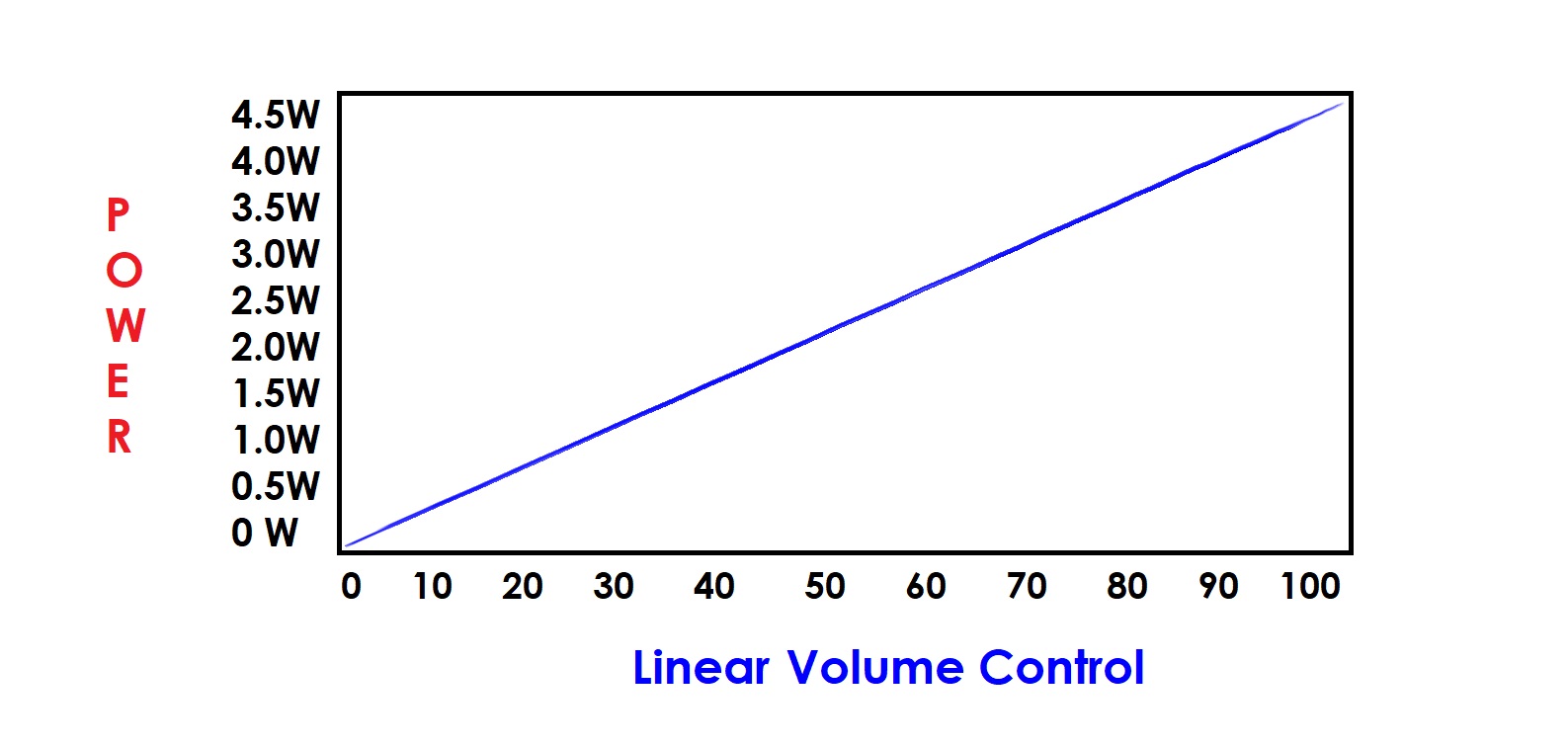
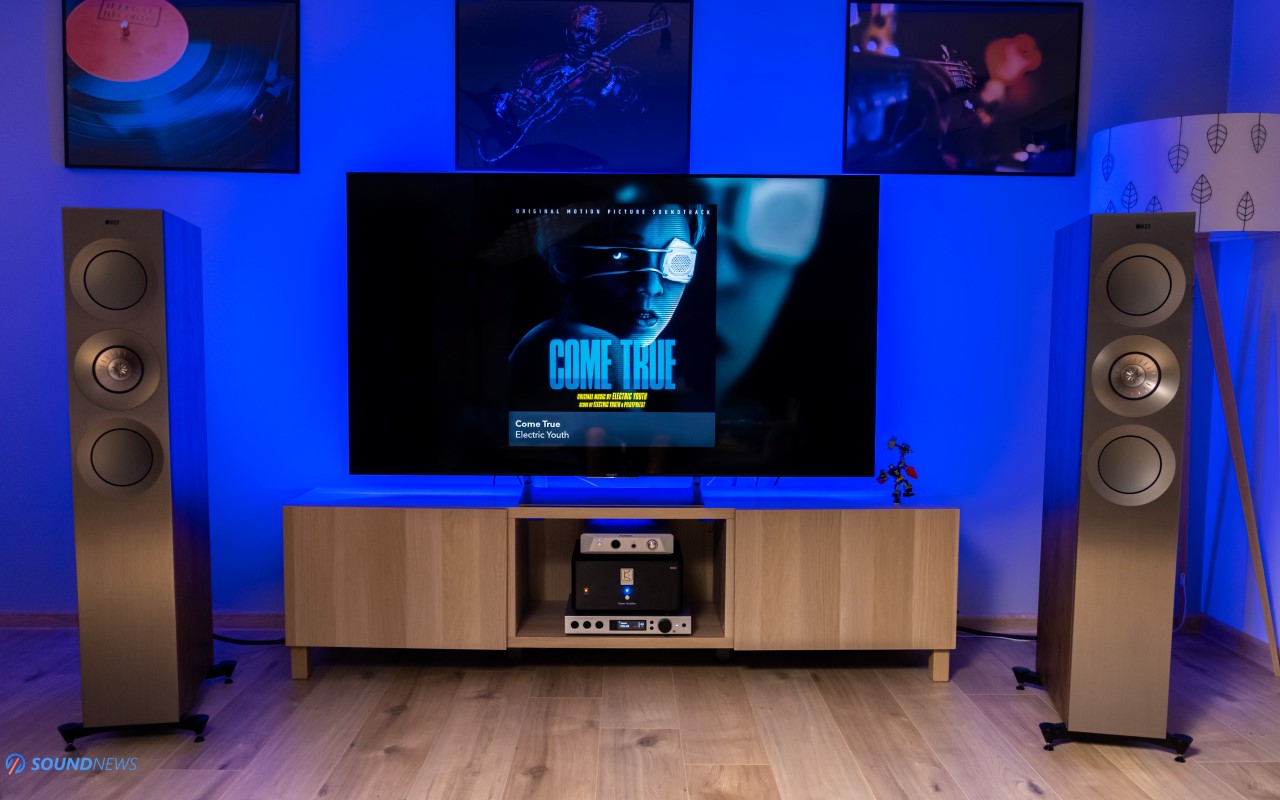
Test Equipment
I wanted to understand it fully and unleash its truest potential, so it was mandatory using it with high-end converters. I also wanted to hear how it performs with a weaker signal via XLR like 3.8V instead of 4V and subsequently how it performs with higher voltages (4.5V, 5V and 6V) and this is precisely why it was connected to an Audiobyte HydraVox first and then to a Matrix Audio Element X. I consider them as the best converters that I’ve tried and I am pretty sure that I will be squeezing the best Andromeda has to offer.
I have also tried it in a loudspeaker setup briefly working as a preamplifier, connected to a KECES S300 power amp, driving some KEF Reference 3 loudspeakers. Okay everyone, enough with the talk…let’s hit some ear-drums!

Sound Performance
I. Preliminary Impressions
I didn’t experience that many headphone amplifiers that sounded very different from brand new versus burned-in for a few days. Going by the rule of thumb, if your amplifier has a bigger transformer inside and a much higher capacitance, then it should start blooming around 24 hours or even better 48 hours later for the best results.
At first, Andromeda felt lackluster, I couldn’t put my finger on what exactly was missing. It was clean, it felt powerful even with planar-magnetic headphones, but the engagement factor was missing in action. Dynamics felt strained, as it sounded stiff and opposed to what I would normally experience out of a class-A amplifier. 24 hours later, some impact returned back, stiffness went away, but I was still longing for more emotions. I left it play for another 24 hours and finally it transformed into an effortless and easy-going amplifier. Music started flowing nicely and my older music was pumping more emotions, exactly as I wanted to.
With all that said, Andromeda isn’t sounding like regular Class-A amplifiers, even 48 hours later. Its tonality is very different to that of Flux Lab FA-10, Kinki Studio THR-1 or Audio-GD D38. Instead of going to the overly warm side, packing muscle mass and delivering thunder like bass notes, Andromeda chosen a non-violent path. It was lighter on its feet, it was faster sounding than those units, it was more linear/neutral and it was approaching the sound that I am normally hearing from THX-AAA and NFCA amplifiers. It was linear, with just a small pinch on naturalness in between those notes. In this regard Andromeda worked better with warm sounding sources and headphones and it didn’t pair that well with neutral sounding gear. It’s quite interesting how different it is sounding to their Pegasus DAC, that was more about emotions and warmth. I presume they wanted to counterbalance the warmer nature of Pegasus with a more linear and clean sounding Andromeda.
When I’ve tried the heaviest loads like Audeze LCD-4 and Hifiman Arya via its 6.35mm jack, it was struggling a bit in offering the right amount of power, I was maxed out and wanted a little more volume to play with. However, on its balanced out, that issue is no more and somewhere around 2 to 3 O’clock, both were already way too loud, leaving a few steps for a nicer headroom. Its 4.5-Watt output was enough for headphones of such caliber, but it wouldn’t be enough for something like a Hifiman HE-6, Susvara or Abyss AB-1266.
It was quite interesting how Andromeda was playing with my imagination when I was listening to live music, putting more air around those notes, increasing the void spaces between them and creating a natural depth. It was doing that by a hair better compared to my $3000 Benchmark HPA4, while retaining the same sound staging capabilities. It wasn’t pushing those notes too far away how Burson Soloist 3X was doing and it certainly didn’t feel as airy to the xDuoo TA-30.
Nonetheless, there are still many qualities to be found inside this one. Its linear and straight as a line frequency response appeals to a lot of folks, its clean sound is somehow mimicking modern amplifiers that care a lot about measurements. It has plenty of power under its hood and it will prove later on to be a worthy ally with sensitive IEMs.
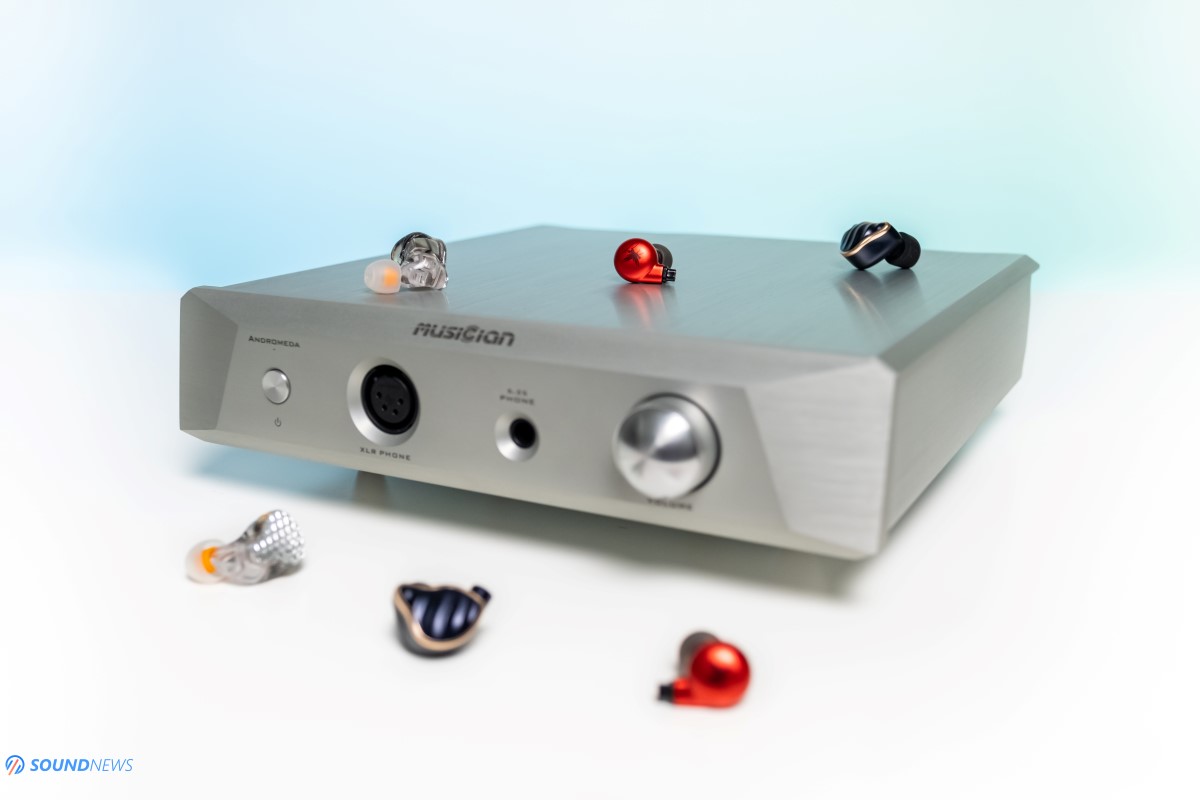
II. Noise Floor & IEM Compatibility
Musician team mentions a noise floor of 2.9 micro-Volts on its balanced out and 6.2 uV on its regular headphone jack. That is already reference performance in my book as usually Class-A amplifiers have a much higher noise floor than that. FiiO FA9 are still the most sensitive IEMs I have around, they can easily pierce your eardrums as a single milliwatt of power is needed to achieve a sound pressure level of 113 dB.
I went first on its noisier 6.35mm jack, I’ve plugged and unplugged them several times, just to discover the sound of silence. Moving that volume wheel up and down, it was clear that Alps Blue Velvet pot is not exactly the best option for IEMs, there is a bit of static noise when that wheel is being touched, but it goes away immediately after finding your listening volume. At my usual listening level, I again cannot spot nasty gremlins playing accordion in the background. Its noise-floor was nowhere to be spotted, only a pitch-black background that works as magic with sensitive IEMs. Going way past my listening levels, some residual noise made an appearance in my music, but it wasn’t that loud and bothersome as it was on Burson Conductor 3 units (Performance and Reference) and on the Kinki Studio THR-1. Of course, at that volume level nobody could listen to IEMs and I consider that Andromeda is an IEM friendly amplifier. Moving on to its balanced out, on my usual listening level I couldn’t spot its noise floor with FiiO FA9, making it a perfect companion for IEM listeners.
Its exponential volume control proved helpful with IEMs, as I could easily go up to 10 O’clock position and I didn’t need to readjust the volume several times just to find the perfect spot. While I’m not a huge fan of exponential volume pots with desktop headphones, those work as magic with sensitive IEMs, that don’t need that much power to be moved.
Every other IEM I have around, portable over-ear headphones and those sensitive desktop headphones of Kennerton, were simply dead-silent and I could never pick its noise floor even at its maximum volume.
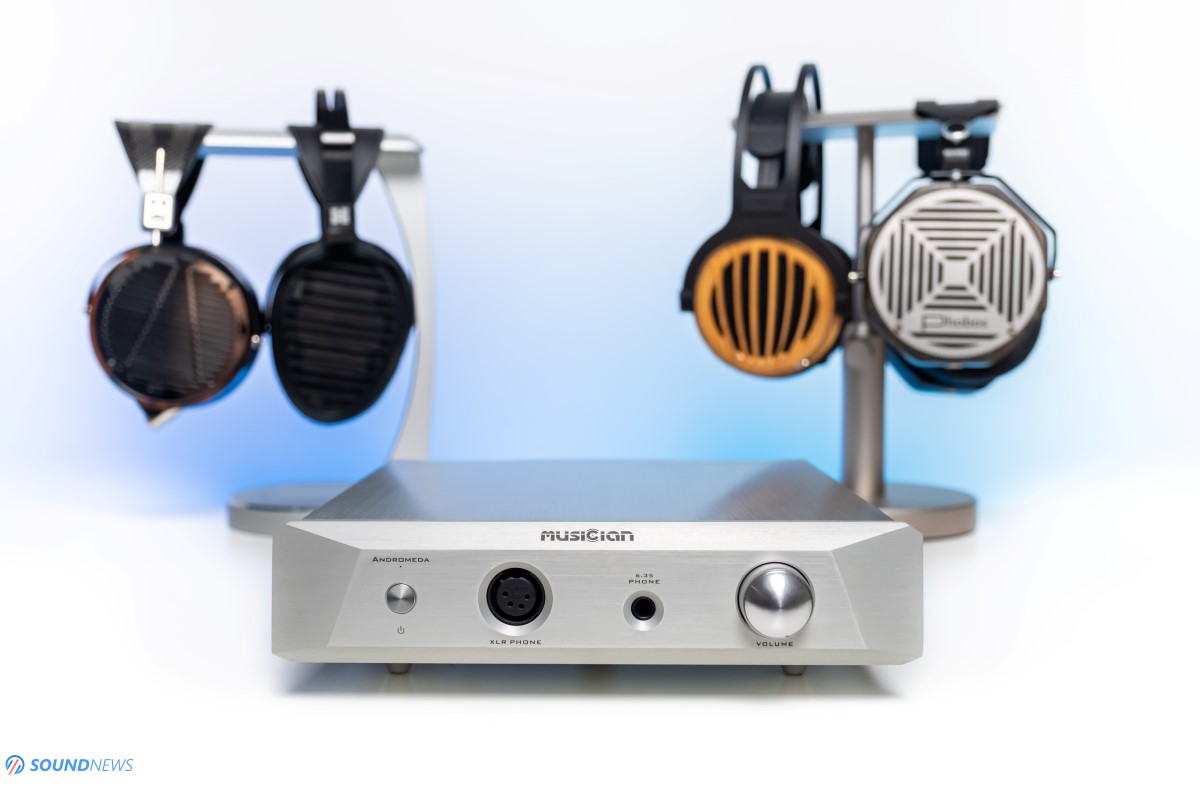
III. Power Output
Andromeda can pump a decent amount of power, slightly more than a usual desktop headphone amplifier and less compared to the latest batch of Class-A amplifiers like Burson Soloist 3X, Flux Lab FA-10, Kinki THR-1 and Audio-GD Master 9. At first, its unusual volume control made it appear as under-powered, but once I went past its 2 O’clock position, the kraken within was released into the wild. It was able to perfectly drive and control every headphone I have around with the exception of one black sheep: Hifiman Susvara. Andromeda wasn’t shutting down with those, as it happened with other amplifiers, but its loudness wasn’t sufficient for an enjoyable listen. I’ve tried increasing the voltage of my DAC to 6V adding more volume to play with. With that setup, Andromeda started clipping and distortion made an appearance in my tunes. From a bigger flock of desktop DACs, it worked the best with Matrix Element X that pumps 4.5V making the Andromeda ever so slightly more powerful, while maintaining a distortion-free performance even at max power.
With headphones like Audeze LCD-4, Hifiman Arya and Kennerton Wodan, Andromeda drove them fully, nicely controlling their drivers, keeping up with fast impactful tunes. It worked the best with warmer sounding headphone and less so with linear ones. LCD-4 and Wodan were probably the best pairings with this particular amplifier. Honestly, I was taken away by so many layers of treble information it presented on the table, I would never guess this is a Class-A amplifier if I wouldn’t check its spec sheet.
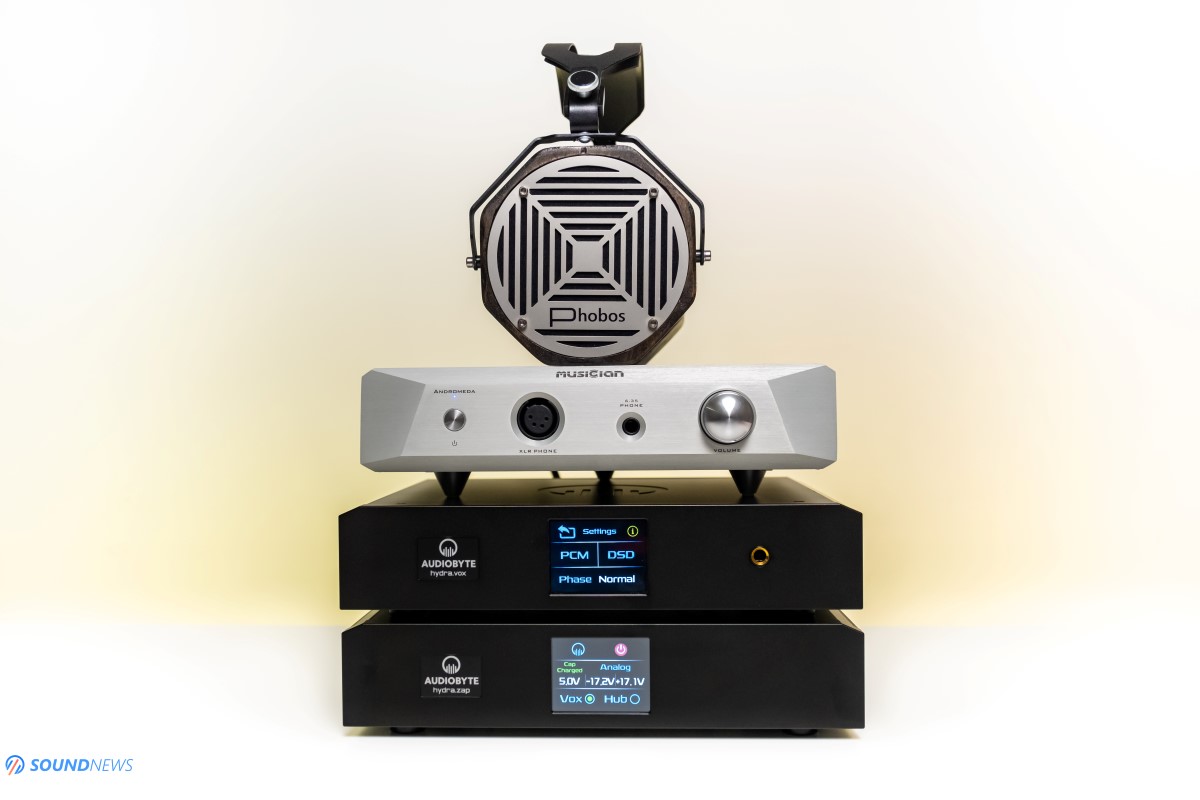
IV. Resolution & Transparency
Andromeda is a low-noise and wide bandwidth amplifier and that translates in a close to perfect detail retrieval. It shines the most in this exact department, as I find it clean sounding, detailed and transparent to its core. I was impressed by its detail retrieval, as all other amplifiers that are working by the same principle weren’t that clean and transparent sounding to me, with the exception of Burson Soloist 3X that I find slightly cleaner and more detailed.
At first it sounded stiff and congested when it came to dynamics, but it was crystal clear without touching the overall cleanness of the analog signal. Going through a wide variety of music, especially acoustic music where tens of instruments are playing the background, I was able to focus my attention only on the ones I wanted. The more I was listening to it, the more it started to resemble THX Achromatic Audio Amplifiers, like SMSL SP400 and Benchmark HPA4, it was clearly going into that direction, choosing a much cleaner and linear approach of rendering the music.
When I connected it to an Audiobyte HydraVox DAC, Andromeda was able to fully preserve its liquidity and note binding, music became real sounding, like a digital to analog conversion wasn’t happening at all.
Buckethead’s Whitewash (Tidal / Spotify) starts strong, sending clear messages of its intention. It is one of the best tracks when it comes to eardrum impact, note placement around the listener, depth, but also when it comes to detail retrieval. There aren’t tens of instruments playing in the background, but the ones present are clearly defined, having a natural decay and reverb, highlighting a clean drum performance.
Two for One by Steve Smith (Tidal / Spotify) is a dynamics feast, recorded at a higher dynamic range every note felt impactful and bold, but also extremely defined and clean sounding. The treble performance and all the percussion work stood out immediately, it was clean and outlined, with a lot of air passing through all that. It was easy focusing on the smallest details, on the brush sticks touching the drums, on the snare drum hits. The final drum solo put goose bumps all over my body, as the amount of energy coming out went through the ceiling. An amazing performance that was perfectly rendered by the Andromeda.
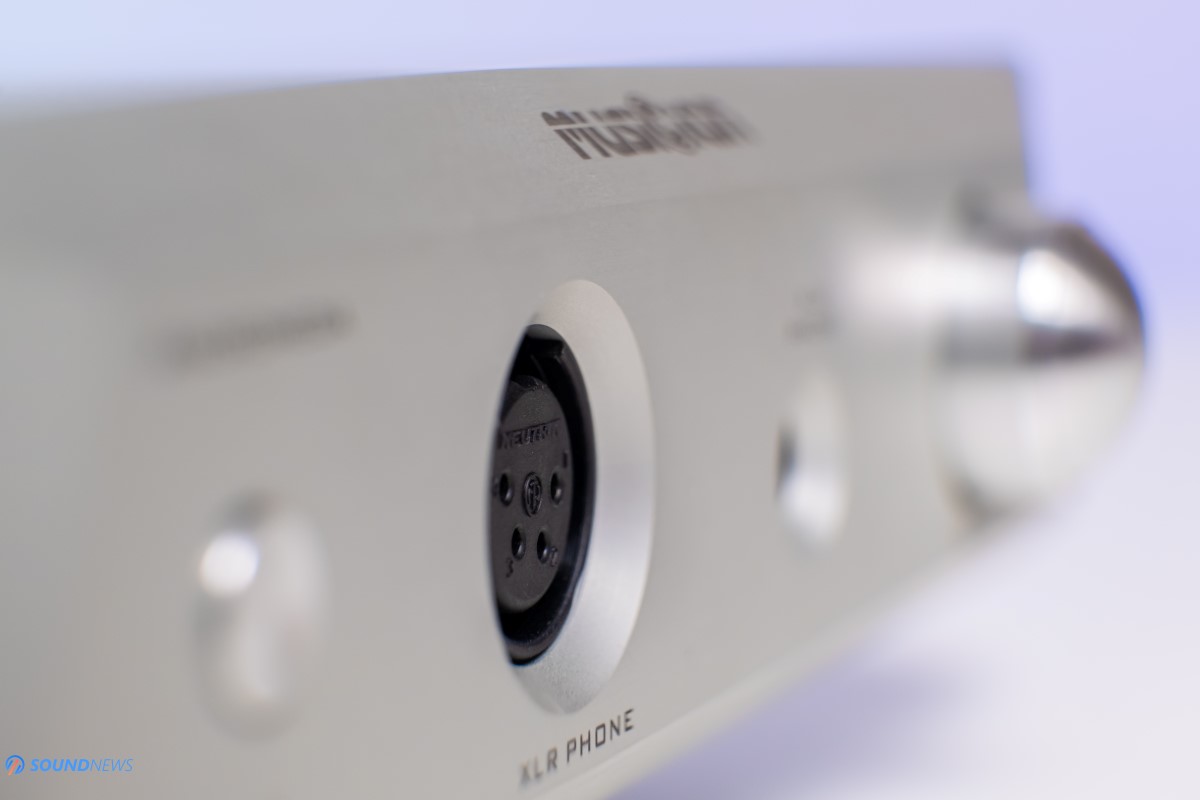
V. Transient Response
When I just started listening to it without any kind of burn-in, I was let down by its limited dynamics and I’ve sent immediately some feedback to its makers. They replied back that its circuitry uses plenty of capacitance and a complicated power supply with tens of voltage regulators, informing me that at least two days of burn-in would be mandatory and a few more for the best results. Two days later, my smile returned back, as finally the slam in the bass made an appearance in my tunes, another day passed and it finally started to form a denser tonality.
What is kind of interesting, is that I don’t find it putting a bigger accent on its bass delivery, how usually class-A amplifiers are doing. Andromeda chooses to have a linear frequency response, focusing on details, on its lightning-fast speed and less so on a thunder like bass rendition, that I’ve heard with Burson Soloist 3X and Flux Lab Acoustics FA-10. It makes me even more curious about what hides behind that aluminum heat sink. Firing some lighting fast tunes that are challenging even the fastest sounding amplifiers there are, Andromeda was able to keep up with the rising tempo of Infected Mushroom, The Prodigy and Chemical Brothers. It was propelling those notes back and forth like a machine gun and it easily passed the speed test with high marks. I longed for a deeper bass response and sometimes for a longer sustain, but it is nice to have a different tuning this time around. Musician team explained that they wanted a perfect companion for their smooth and highly engaging sounding Pegasus DAC without going overboard to the dark side. This is how Andromeda was forged, focusing mostly on speed, on transparency and detail retrieval and less so on the emotional side, that is already being helped by the smoother sounding Pegasus.
In my humble opinion, Andromeda matches well with smooth and relaxed sounding sources, R2R DACs of any sorts should pair very well with it, I wouldn’t put it in a dry sounding setup, it also doesn’t work that well with headphones that are putting a higher accent on treble performance. I would personally stay away from Beyerdynamic, higher end Sennheisers and from several Hifiman headphones. From the ones I have around, it worked the best with all Kennerton headphones, with Meze, Audeze and Quad headphones.
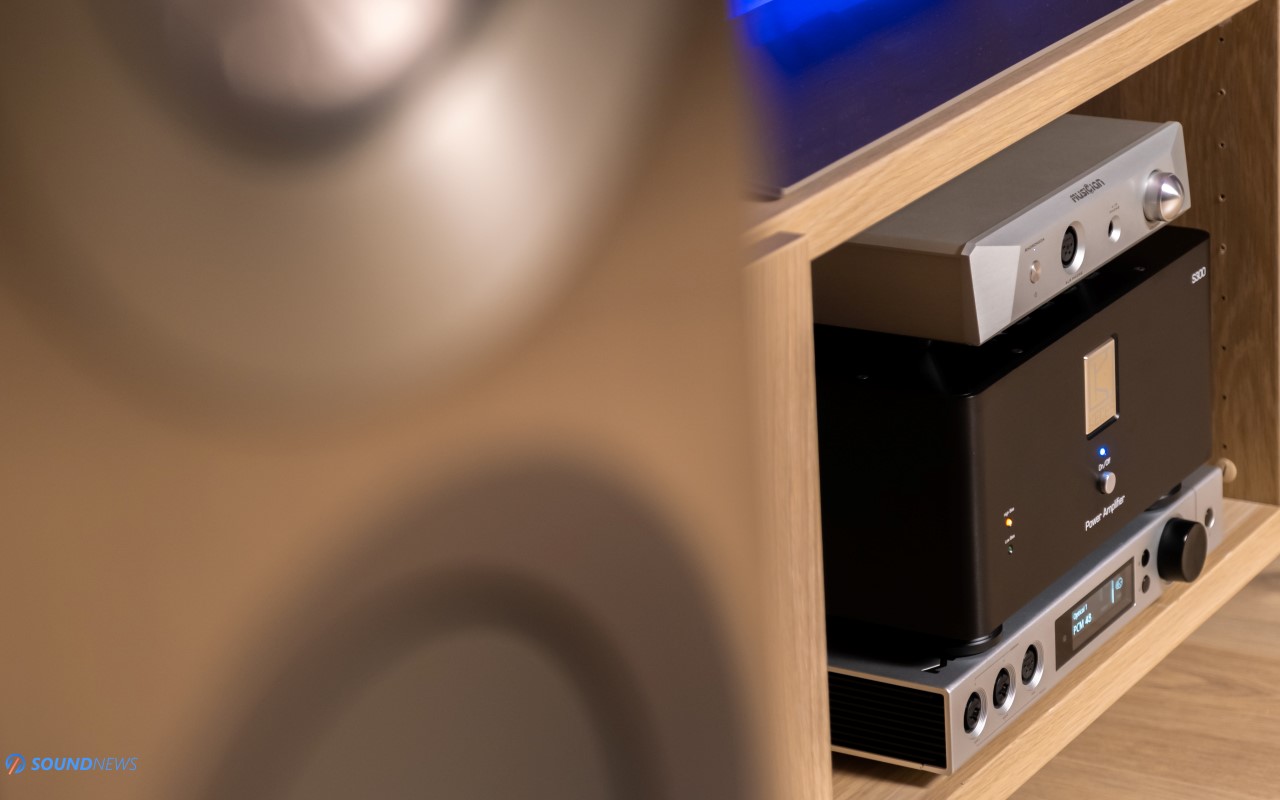
VI. Soundstage & Depth
This is another part that I’ve criticized immediately after pressing play, but in time it added more air and the blank space between each and every note increased in size. The bigger ELNA capacitors need time to settle and its 3-stage power supply also needs time to achieve the best results. Its power output and transient response is directly linked to its sound staging capabilities. The harder an amplifier is punching those drivers, the deeper and wider the sound would be. Since Andromeda is not exactly a power house and a very hard puncher, how I would describe some other amplifiers, I find its soundstage above average for the most part. It sounds like a desktop unit of course, the sound is a lot bigger compared to a portable device, but it wouldn’t approach the soundstage levels of a Flux FA-10 or Burson Soloist 3X. In its defense, I find it pretty much on the same level with a Benchmark HPA4 in here, Topping A90 also sounds exactly as open and wide. It is decent in here, it still moves air around pretty easily, there are plenty of bass notes pulsating, sending layers one after the other to the listener, but it doesn’t increase the overall picture too much. Nothing wrong about it, just a fact that needs to be mentioned.
It wouldn’t impress that much when it comes to scale, but it was still very precise when it came to depth information, as I could easily appreciate the distance between every musical note and myself. I could easily pick those low intensity notes from the back stage, it wasn’t creating that cozy, almost claustrophobic sound that entry level THX amplifiers are doing. It still pushed air, just not a whole lot of it how tube-based or more expensive Class-A amplifiers would be doing.
It will not artificially boost the soundstage size, as it happens with few amplifiers and it will render all that information as close as possible to the original intent of the mastering engineer. If I am going to listen to a live record, then it will start sounding bigger, wider and taller and vice-versa – closed-in recordings will seriously decrease the amount of air in the room, creating a cozier, almost an on-stage performance.
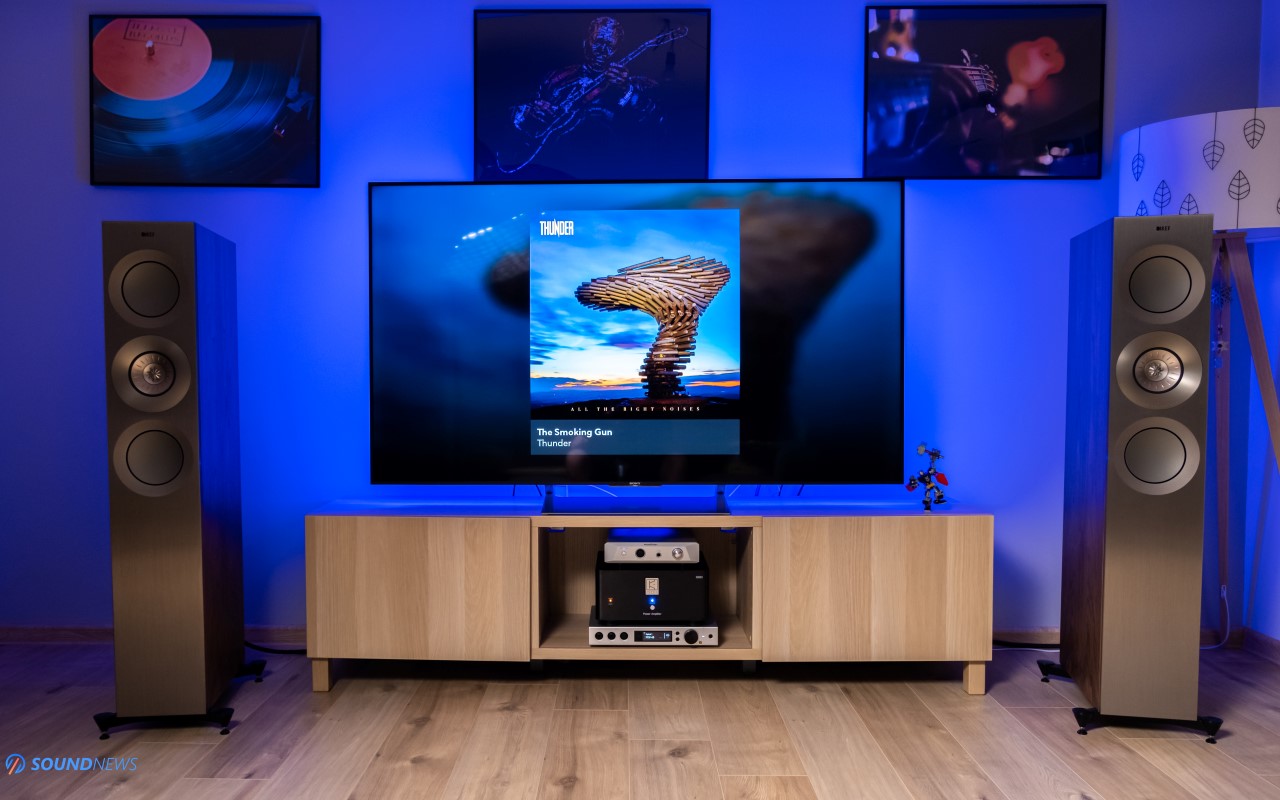
VII. Preamplifier Performance
For an in-depth review all its features are needed to be tested, so I’ve unplugged my headphones and then I moved it in between a Matrix Audio Element X that was working as a streamer and DAC and a Keces S300 power amplifier – that will be doing all the heavy lifting for the KEF Reference 3.
Andromeda is not having a remote control, so it was uncomfortable using it from a couch, but in a near-field desktop setup with some powered loudspeakers sitting near you, it should work no-problem. The first thing I’ve observed is that it was dead-silent with my loudspeakers, I couldn’t hear any kind of noise or hum coming out of that UNI-Q coaxial driver. When music started playing, I’ve heard the same linear and honest tonality. It was almost invisible in my setup, the sound didn’t change that much coming from a Topping Pre90 and Benchmark HPA4 at it was going in the same direction. The final outcome was a clean undistorted sound, it was going fast as a wild horse and it didn’t change that much the sound of the Reference 3 which I already know very well. Ref 3 have an extremely transparent and clean sound and a less than a perfect preamplifier would be downgrading their transparency, but that wasn’t really the case with the Andromeda. Swapping the Element X with a HydraVox and then with a Gustard X26, the sound shifted immediately from clean to euphonic and liquid and then back to transparent and powerful. Andromeda didn’t change the character of said digital sources, it just let them do their thing, fully preserving the sound purity.
If you need a higher performance preamplifier, based on much nicer analog-relays working in an R2R resistor ladder network, with more analog inputs and outputs, bundled with a great looking aluminum remote control, then please check their newest Monoceros preamplifier right here.
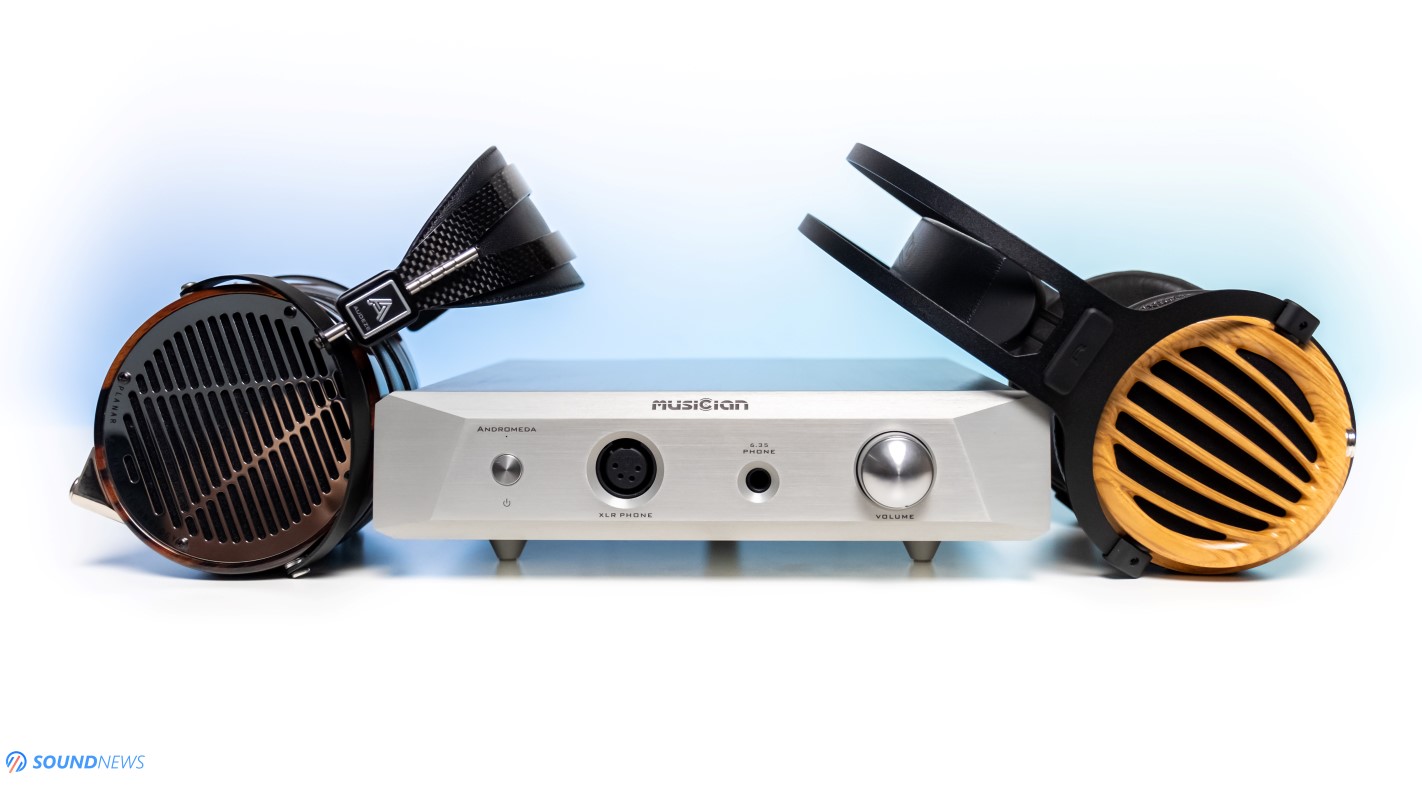
VIII. Frequency Response
Andromeda is a wide-bandwidth amplifier, it sounds clean for the most part and very extended, especially in the upper treble. I find it linear and straight as a line, so obviously not a lot of things are standing out while listening to it. Everything seems at the same level, playing at the same SPL.
Its sub-bass performance wasn’t that impressive in the first 3 days, but it was more present in my tunes after that. I found those sub-bass notes mostly with bass-oriented headphones like Audeze LCD-4 and Kennerton Wodan. Those notes didn’t feel overpowered with headphones like Hifiman Arya or Erzetich Phobos and sometimes I wanted a harder bass slam and a higher low-end presence in my tunes. On the other side of the coin, it presented a clean type of bass, quite layered and airy sounding most of the time. It was ethereal on several occasions, lacking weight and body, so extra care is needed while matching it with lean or bright sounding headphones. Mid-bass was better, it was more present in my tunes, it was bolder and I could spot it much easier. Its overall bass performance can be described as clean and defined, while lacking a bit of body and weight.
Midrange is performing unlike usual Class-A amplifiers. It sounds neutral in here, almost to a point of being less involving with some particular gear, hence recommending a warmer sounding acoustic chain with it. The voices felt real and had the right pitch, those were weighty and heavy at times, male voices lacked a bit of grunt and those weren’t that guttural. I felt the raw energy of my jazz and rock tunes and from my perspective it had a right amount of detail and naturalness. It never went overboard to any side and it always stood in the middle when it comes to tonality.
Treble was accentuated in the first days, it was tilted towards brightness just a tiny bit, but once a higher current passed through those capacitors and it had a warmer case on top, the brightness went away. Andromeda is truly one of the very few amplifiers that changed its character significantly. In its current state, I find its treble performance great. It’s defined in here, very extended in the top octave and that easily improves the sound of their Pegasus DAC. As of right now, it isn’t putting a higher accent on its top-octave, it is still a linear and perfectly neutral amplifier.
Overall, I find its frequency response complete from top to bottom, it will render all that information without moving its spotlight to a particular region. It’s good in terms of frequency response, as it covers my hearing range in full.
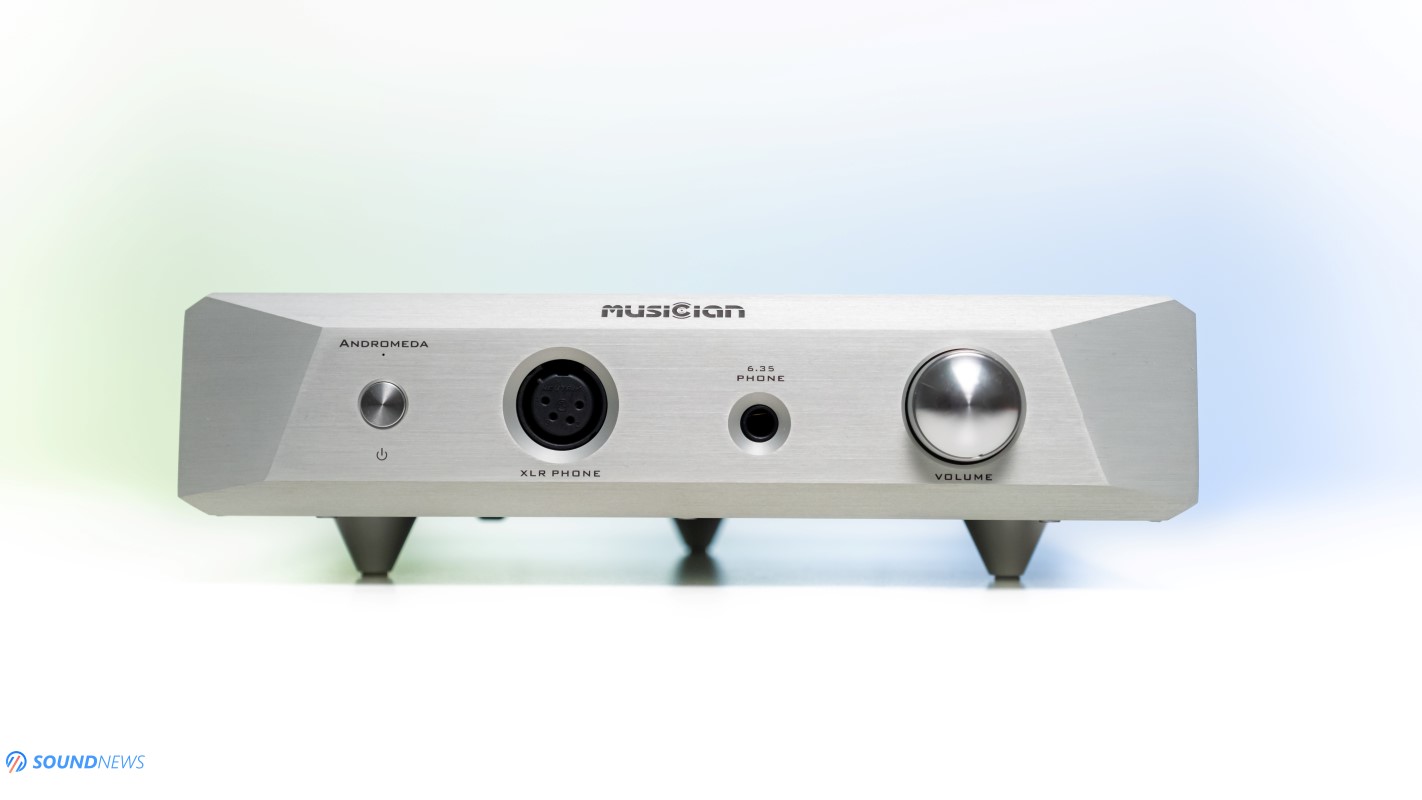
Conclusion
While listening to it for a several days now, I thought never left my mind: they tuned their Andromeda to work in harmony with their R2R Pegasus DAC. Mating it with several DACs of all sorts, it was clear that it works best with smooth and euphonic sounding units. HydraVox gained more power with it and I could finally drive much harder loads, while fully preserving its character. It surprised me with its linear tonality, it wasn’t putting an accent on a particular frequency range, it was almost dead-neutral at times, without intervening that much in my headphone or loudspeaker setup. It was detailed, clean and fast sounding for the most part, appearing invisible to several headphones, leaving all the seasoning work to your DAC and headphones.
I just wish it had more power on tap and a two-position gain switch, but I hope Musician will use it as constructive feedback to build nicer units in the future. It drove all my headphones with authority, fully controlling their drivers, it was dead silent with IEMs and I’m finding it cool and unique looking, so there is definitely a lot of appeal left.

I’m awarding it our Bronze Award for a great performance when it comes to technicalities, for a nice look and feel. I recommend it only if you are looking for a different flavor to the rest of your Class-A amplifiers and only if your mellow and slow sounding source begs for a nicer speed and for a cleaner output.
You can learn more about it on its dedicated web-page right here and you can get it from its sole world-wide distributor right here that kindly provided our review unit. If you are getting one, please come back and leave a comment!
PROS:
- Built like a tank, impressive case work
- Sleek looking, neither too big or small, perfectly sized
- Very good part selection, high-quality components
- Linear frequency response, can be too neutral at times
- Good detail retrieval, very clean sounding
- Impressive levels of transparency and resolution
- Great pace, rhythm and timing
- IEM friendly amplifier, very low noise-floor
- Great preamplifier section
- Decent value
CONS:
- Lacks bass slam
- Would like more power on tap for a better headroom
- A two position gain switch would be nice to have
- Lacks a remote-control to be used as a preamplifier
- Not the widest soundstage
ASSOCIATED EQUIPMENT:
- Sources: Xiaomi Mi 9T Pro, Corsair One i160
- DACs: Audiobyte HydraVox + HydraZap, Matrix Audio Element X, Flux Lab Acoustics FCN-10, Gustard X26, Gustard X16
- DAPs: Shanling M8, FiiO M15
- Headphone Amps: Benchmark HPA4, SparkoS Labs Aries, Flux Lab Acoustics FCN-10, SMSL SP400, xDuoo XA-10, Gustard H16
- Power Amps: KECES S300, Kinki Studio EX-M7
- IEMs: FiiO FD5, FA9, FH7, Meze Rai Penta, Rai Solo, LittleDot Cu KIS & many others
- Portable headphones: Sennheiser Momentum 2, Meze 99 Classics
- Full-sized headphones: Hifiman Susvara, Hifiman Arya, Audeze LCD-4, Erzetich Phobos, Erzetich Mania, Kennerton Wodan, Gjallarhorn, Vali, M12S, GoldPlanar GL2000, Quad ERA-1, Ollo S4X Reference
- Loudspeakers: KEF Reference 3
- Interconnects: QED Reference (x3), Topping TCX1 (x3)
- Speaker cables: Kimber PR8, Audioquest Type4
- Power Cables: Isotek EVO3 Premier (x3)
- Balanced Isolation Power Conditioners: PLiXiR Elite BAC400
